Attached files
| file | filename |
|---|---|
| 8-K - FORM 8-K - Sorrento Therapeutics, Inc. | d805086d8k.htm |
| EX-99.1 - EX-99.1 - Sorrento Therapeutics, Inc. | d805086dex991.htm |
 1
Next-Generation
Cancer Therapeutics
October 2014
Exhibit 99.2 |
 2
Safe Harbor Statement NASDAQ:
SRNE This presentation contains "forward-looking statements" as
that term is defined under the Private Securities Litigation Reform Act of
1995 (PSLRA), including statements regarding expectations, beliefs or
intentions regarding our business, technologies and products strategies or prospects.
Actual results may differ from those projected due to a number of risks and
uncertainties, including, but not limited to, the possibility that some or
all of the pending matters and transactions being considered by the Company
may not proceed as contemplated, and by all other matters specified in
Company's filings with the Securities and Exchange Commission,
as well as risks inherent in funding,
developing and obtaining regulatory approvals of new, commercially-viable and competitive
products and product candidates, including timelines, the size of clinical trials,
sufficiency of data from those trials and the requirements of the FDA for
potential approval of Cynviloq™.
statements are made based upon current expectations that are subject to risk and
uncertainty and information available to the Company as of the date of this
presentation. The Company does not undertake to update forward-looking
statements in this presentation to reflect actual results, changes in
assumptions or changes in other factors affecting such forward-looking information.
Assumptions and other information that could cause results to differ from those set
forth in the forward-looking information can be found in the Company's
filings with the Securities and Exchange Commission,
including
its
most
recent
periodic
report.
We
intend
that
all
forward-looking
statements
be subject to the safe-harbor provisions of the PSLRA.
These |
 3
Henry Ji, PhD
President,
CEO & Director
Inventor
of
G-MAB
®
Technology
President & CEO of Stratagene Genomics
VP of CombiMatrix and Stratagene
George Uy
EVP & CCO
Directed
the
launches
of
Abraxane,
Xeloda
®
&
Fusilev
®
Responsible for building Spectrum Pharma commercial
organization
Responsible for M&A of Igdrasol
David Miao, PhD
CTO
President and CSO of Concortis BioSystems
Co-inventor of IP covering ADC technologies
Head of Chemistry at Ambrx
Richard Vincent
EVP & CFO
$430M sale of Elevation to Sunovion-Dainippon
Meritage Pharma option agreement with Shire
($90M upfront + milestones)
$310M sale of Verus asthma program to AstraZeneca
Elan: various acquisitions and divestitures with aggregate
values more than $300M
Mike Royal, MD JD
EVP, Clinical &
Regulatory Affairs
Key contributor to over a dozen ANDAs and several NDAs
Managed clinical operations and regulatory activities
across multiple trials worldwide for both small molecule
and biologic products
Management Team
Board of Directors
William S. Marth -
Chairman
Albany Molecular (President & CEO)
Teva –
Americas (former President & CEO)
Mark Durand
Radius Health (CCO)
Watson, Teva –
Americas (former CFO)
Douglas Ebersole
PDL (former SVP, Corporate Development
& Legal)
Kim D. Janda, PhD
The Scripps Research Institute (Professor)
Henry Ji, PhD
Sorrento (President & CEO)
Jaisim Shah
Semnur Pharmaceuticals (CEO)
PDL (former CBO)
3 |
 4
RTX
Positive Phase 1/2 data
New cohorts being enrolled
Pivotal Phase 2: 2015
TUMOR
AfDC
MYC Inhibitor
Cynviloq
>1,200 pts treated in clinical trials
Initial PK data suggest BE
to albumin-bound paclitaxel
TRIBECA Completion: Q1 2015
NDA Submission: Q3 2015
Next-Generation Cancer Therapeutics
G-MAB
onjugate
rug
ntibody
ADC:
C
D
A |
 5
*Abraxane
®
(paclitaxel albumin-bound particles for injectable suspension)
(albumin-bound), registered trademark of and marketed by Celgene Corp.
INDICATION > TARGET
CYNVILOQ™
G-MAB &
Bi-Specific AB
ADC
RTX
Oncology
> PD-L1
Oncology/Inflammation > CCR2, CXCR3
Oncology > VEGFR2,
c-MET, CXCR5
Oncology
> PD-1
Intractable Cancer Pain
INDICATION
Metastatic Breast Cancer
Non-Small Cell Lung Cancer
Bladder Cancer (sNDA)
Ovarian Cancer (sNDA)
505(b)(2) Seeking Bioequivalence
versus Albumin-bound paclitaxel*
Pancreatic Cancer (sNDA)
PHASE 3
PHASE 2
PHASE 1
PRECLINICAL
Multiple Commercialization
& Partnership Opportunities
MYC Inhibitor
Oncology
5 |
 6
Recent Corporate Events
Positive PK data from first 8 unblinded patients suggest BE between Cynviloq and
albumin- bound paclitaxel
Positive data from RTX Phase I/II cancer pain trial
Licensing agreement to develop and commercialize anti-PD-L1 mAb with
Lee’s Pharmaceutical for greater Chinese Market
Exclusive research and option agreement to generate and develop antibody-drug
conjugates (ADCs) with Morphotek / Eisai
National Institute of Health (NIH) grants to fund development of:
(i)
anti-MRSA bacterial bi-specific antibodies
(ii)
antibody
formulated
drug
conjugates
(AfDCs)
against
P.
aeruginosa
infections
(iii)
immunotherapy targeting Idiopathic Pulmonary Fibrosis (IPF)
(iv)
small molecule MYC inhibitor |
 7
Lead Oncology Product Opportunity
Cynviloq
Registration
Trial
(Paclitaxel
polymeric micelle) |
 8
Mean size
~25 nm
Cynviloq
paclitaxel
polymeric micelle
Chemical
polymer:
Poly-lactide and
polyethylene glycol
diblock copolymer
3
rd
>300 mg/m
2
(up to 435 mg/m
2
)
Albumin-bound
paclitaxel
Mean size
130 nm
Biological
polymer:
Donor-derived human
serum albumin (HSA)
2
nd
260 mg/m
2
Taxol
®
paclitaxel
Cremophor EL
excipient:
Polyoxyethylated
castor oil
Formulation
Generation
1
st
175 mg/m
2
Maximum
Tolerated Dose
Peak
Product Sales
~ $1.6B (WW in 2000)
$1.5-2.0B* (2017)
MBC, NSCLC, PC
Conversion of
paclitaxel sales +
new indications
*Celgene Presentation at UBS Global Healthcare Conference, May 19, 2014 pp.9
Cynviloq: Next Generation Paclitaxel Therapy |
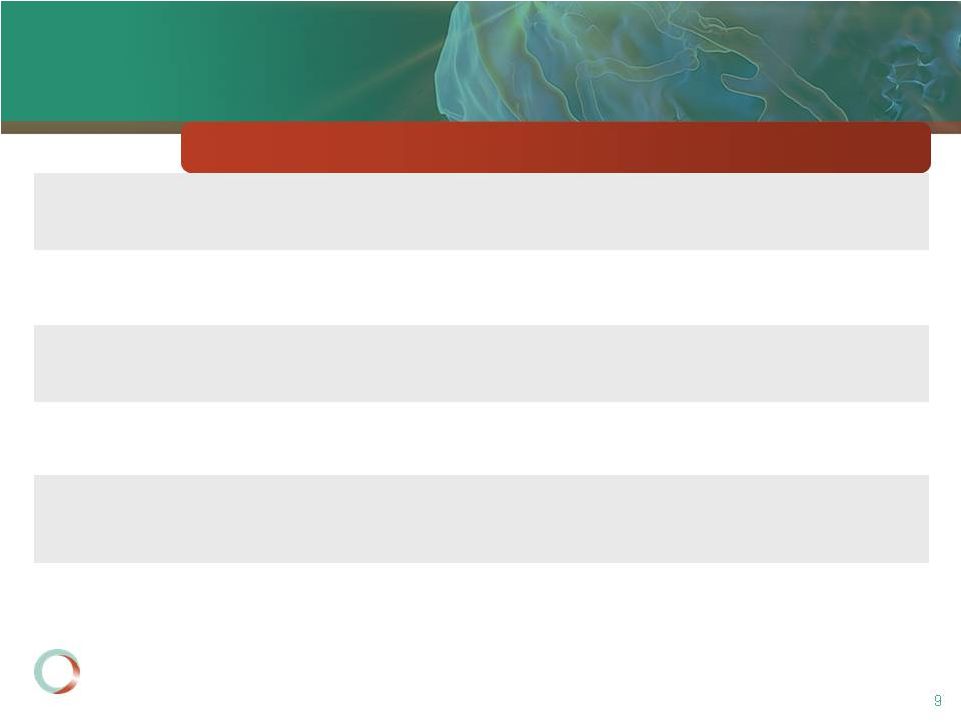 9
Cynviloq Clinical Summary
Phase 1:
Trials
established
MTD
at
>300
mg/m
2
-
Dana
Farber
Cancer
Inst,
Russia,
&
S.
Korea
(total n=80)
>300
mg/m
2
(q3w)
vs.
175
mg/m
2
(Taxol;
weekly)
Phase 2:
Completed
trials
in
MBC,
NSCLC,
PC,
OC,
BC;
in
US
-
Yale
Cancer
Center,
Russia,
S.
Korea
(total n=259)
Possible Phase 3 sNDA programs in these tumor types
Phase 2b*:
Chemo-naïve Stage IIIb/IV NSCLC vs Taxol in S. Korea (total n=276;
Cynviloq n=140) 230
mg/m
2
+
cis
(q3w)
vs.
Taxol
175
mg/m
2
+
cis;
non-inferiority
established
Phase 2*:
1st line treatment of OC vs Taxol in S. Korea (total n=100; Cynviloq n=50)
260
mg/m
2
+
carbo
(q3w)
vs.
Taxol
175
mg/m
2
+
carbo;
non-inferiority
established
Phase 3:
MBC in S. Korea (total n=209; Cynviloq n=105 vs Taxol n=104)
GPMBC301. An Open-label, Randomized, Parallel, Phase 3 Trial to Evaluate
the Efficacy and Safety of Cynviloq compared to Genexol®
(Paclitaxel with Cremophor EL) in Subjects with Recurrent or Metastatic Breast
Cancer) PM-Safety:
Completed for MBC and NSCLC (total n=502)
Efficacy and safety data supportive of 505(b)(2) submission
Total number of patients across all trials: 1,260
Data on file
* Investigator Initiated Study |
 10
Phase 3 MBC Clinical Results
* Trieu et al. 2013. IG-001 for Metastatic Breast
Cancer- Interim Analysis of a Phase 3 Trial. 4
Nanomedicine Conference, Sydney, Australia. ** Gradishar
et al. 2005. J Clin Oncol, 23:7794-7803. *** Guan et
al. 2007. ASCO Annual Meeting Proceedings Part I. Jun 20;25 (Suppl 18):1038.
th |
 11
Bioequivalence = Potential Pathway to Market
Albumin-bound
paclitaxel
(n = 27)*
Cynviloq
(n = 27)*
Cynviloq
Albumin-bound
paclitaxel
Key Parameters:
Dose: 260 mg/m
2
Infusion time: 30 min
Duration: 3 weeks +
crossover for 3 weeks
Endpoints: AUC and
C
max
(90% CI)
Cycle 1
Cycle 2
-
Patients with MBC
Note:
Previous
trial
size
estimate
of
100
patients
was
based
on
PK
simulation
of
albumin-bound
paclitaxel
and
Cynviloq
historical
data
with
both
drugs
given
at
different
doses
and
infusion
rates.
Based on the recent positive initial PK data, 53 patients may be, subject to FDA
guidance, sufficient to establish BE.
T R I B E C A™ |
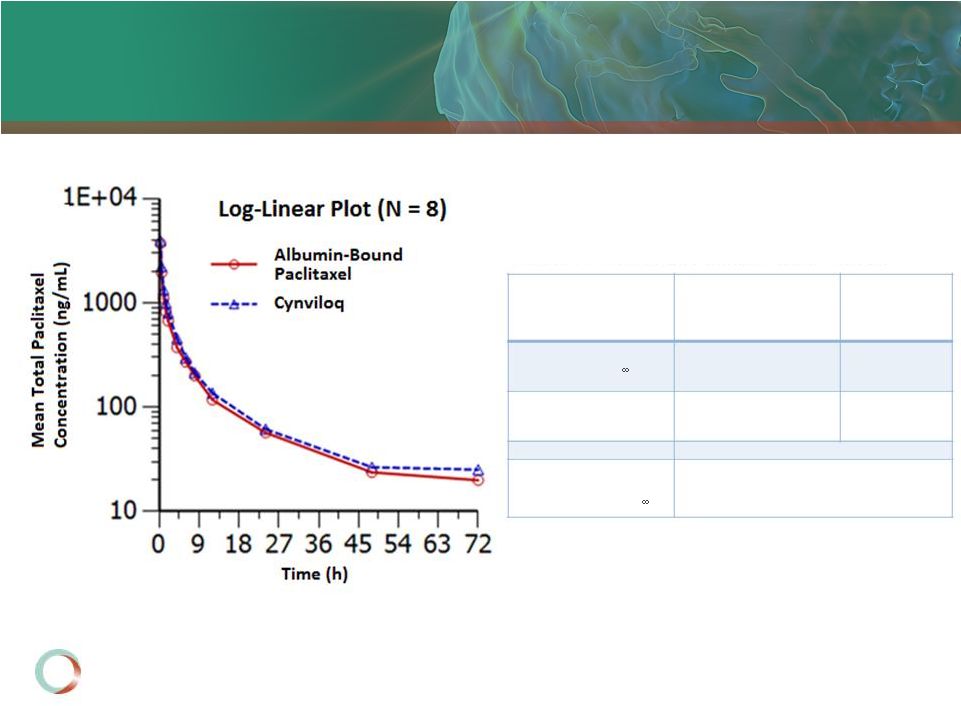 12
Initial PK Data Analyses Suggest BE vs.
Albumin-Bound Paclitaxel
Parameters
Ratio of Cynviloq/
Albumin-bound
paclitaxel (%)
90% CI
Ln(AUC
0 to
)
109.1
93.98 –
126.58
Ln(C
max
)
102.5
83.10 –
126.35
Point estimate
110 -
Ln(AUC
0 to
)
N = 53 with 90% power
BE Assessment and Sample Size Estimate |
 13
Differences in Formulations of Paclitaxel
Cynviloq
5
Albumin-bound Paclitaxel
Taxol®
Formulation
Nanoparticle co-polymer (poly-lactide
and polyethylene glycol di-block)
encapsulated paclitaxel
Donor derived human serum
albumin
4
encapsulated paclitaxel
Solvent-based (Cremophor EL)
paclitaxel
Mechanism of
Action
Rapid nanoparticle dissociation to
release paclitaxel which binds to
albumin in plasma
Tumor uptake via albumin transport
pathway
1
Rapid nanoparticle dissociation to
release paclitaxel which binds to
albumin in plasma
2
Tumor uptake via albumin transport
pathway
2
Slow release of paclitaxel due to
Cremophor entrapment
Freed paclitaxel binds to albumin in
plasma, tumor uptake via albumin
transport pathway
Maximum Tolerated
Dose (mg/m
2
)
>300
260
4
175
6
Reconstitution
No foaming or clumping
3
Foaming or clumping can occur
which requires standing vial for
15 minutes
4
Solution may show haziness
6
Should be administered through an
in-line filter with a microporous
membrane
0,22 microns)
6
Stability of reconstituted
vial
Stable at ambient temperature, use
within 24 hours
3
Needs refrigeration (2
°
C -
8
°
C)
Use within 8 hours
4
Stable at ambient temperature
(~25
°
C) for up to 27 hours
4
Human serum albumin
(HSA)
HSA-free
HSA carries ‘theoretical risk of
viral/prion transmission’
4
HSA-free
1) Motamed
et
al.
IG-001
A
Non-Biologic Nanoparticle Paclitaxel for the Treatment of Solid Tumors. Jan 7,
2014. J Nanomat Mol Nanotech.
http://www.scitechnol.com/ig-a-nonbiologic-nanoparticle-paclitaxel-for-the-treatment-of-solid-tumors-zEUl.php?article_id=1834
2) Neil Desai-
Food and Drug Administration-Regulated Products Containing Nanotechnology
Materials ; Public Meeting, October 10th, 2006. DA Yardley.
nab-paclitaxel mechanisms of action and delivery. 2013. J Control Release. 170:365-72.
3) Kim et al. Clin Cancer Res. 2004. 10:3708-16.
4) Abraxane (paclitaxel protein-bound particles for injectable suspension)
(albumin-bound) Product Insert. 5) Profile based on Genexol-PM
Product Insert in S Korea.. Cynviloq is marketed as Genexol-PM in S Korea.
6) Taxol Package Insert, Registered trademark of BMS.
3 |
 Estimated Timelines and Next Steps*
First patient dosed: March
31, 2014
Last patient out: January 2015
NDA filing:
Q3
2015
Product launch (MBC and NSCLC):
2016
sNDA planning for label expansion into
pancreatic, bladder, and ovarian cancers
BE
Study
*Estimates, subject to discussions with the FDA.
LAUNCH
2016
FDA
Approval
2016
NDA
Filing
2015
2014
14 |
 15
Resiniferatoxin (RTX): A Novel, Non-opiate
Analgesic
RTX
Intractable
Cancer
Pain |
 16
RTX in action |
 Intraganglionic:
(injection into or
near the dorsal root ganglion [DRG])
Intrathecal:
(injection into the
cerebrospinal fluid space)
Two Injection Sites =
Two Products for Human Use
17 |
 RTX Ablates
TRPV1-positive Neurons after Intrathecal Injection
Fore limb
TRPV1-positive cells
(dark brown)
Hind limb
Absence of TRPV1-
positive cells after
RTX treatment
Adapted from Karai et al. 2004
18
TRPV1
TRPV1
TRPV1 |
 Brown et al, Anesthesiology 2005
n=18
n=18
n=8
n=5
n=4
Weeks
(p < 0.0001 for all time points)
100% response rate with single
intrathecal injection
12 dogs reduced or discontinued
analgesics
Dogs passed away due to underlying
osteosarcoma, not RTX treatment
Permanent analgesic effect
Personality intact
Gait and mood visibly improved
Lack of serious adverse events
No opioid-like side effects
Animal health market represents
separate licensing opportunity
Intractable pain due to osteosarcoma
Open-Label Study in Companion Dogs
19 |
 Intraganglionic injection is a potential new
delivery modality for RTX
Adapted from Tender et al. 2005
Nociceptive neuron-mediated
neurogenic inflammation
(Evans blue)
Unilateral injection of RTX into only a single trigeminal neuron,
not only resulted in a local functional difference, but also resulted in a
local reduction of neurogenic inflammation
RTX
control
Left eye (blue) vs
Right eye (red)
20
40
60
80
100
120
140
160
1
2
3
4
5
6
7
8
20 |
 21
Interim Data from the Phase 1/2 NIH
sponsored trial
•
6 advanced cancer pts
with severe refractory
pain dosed with no
unexpected toxicity
•
All 6 pts had near
complete relief post-
injection
•
MTD not reached,
additional dose
escalation being
explored
•
Clinically meaningful
improvement in QOL
•
Improved pain scores
with increased activity
Data presented May 1, 2014 at 33
Annual Scientific Meeting of the
American Pain Society; Tampa, FL
Demographics at Study
Entry
Cancer Diagnosis
Target Pain Area
49 y (f)
Metastatic breast cancer
Low back and bilateral leg pain 2
bone mets
56 y (m)
Metastatic supraglottic squamous cell
cancer
Low back and bilateral hip pain 2
bone mets
57 y (m)
Metastatic pancreatic cancer
Bilateral abdominal (visceral) Pain
68 y (m)
Lymphoma, small fiber monoclonal
gammopathy
Bilateral hip and buttocks
(neuropathic) pain
55 y (m)
Metastatic small cell lung cancer
Left hip pain 2 bone mets
61 y (f)
Metastatic endometrial cancer
Low back and left hip/groin pain 2
bone mets
Patient
Pre
RTX
Injection
Date
Last NRS
PI score
%NRS PI
improvement
Details
1
7.3
5/9/11
6.1 (6 mo)
15.5
Bedridden to walking; nearly Y3 post RTX;
cancer has progressed
2
8.3
5/10/12
3.8 (2 wk)
54.0
Died D35 of pneumonia 2 cancer
3
8.4
8/3/12
6.0 (1 mo)
28.8
Died just past D30 of cancer
4
8.0
10/23/12
5.4 (6 mo)
32.1
Wheelchair-bound to walking; Y1.5 post
RTX; cancer has progressed
5
9.0
2/13/13
8.1 (1 mo)
9.6
Died W6 of cancer
6
8.6
9/23/13
7.9 (1 mo)
8.3
Breakthrough pain meds reduced by half
by M1; ET from study just after M1 due to
cancer progression; died just after M3
Baseline average
NRS = 8.27
Average NRS reduction =
2.05
(24.7% Improvement)
Average 1.6 point improvement across BPI
pain interference items.
rd
O
O
O
O
O |
 22
Next Steps for RTX Development
Under NIH CRADA
Intractable cancer pain clinical Phase 1/2 trial (intrathecal injection);
n~13 patients Phase 1/2 trial for osteosarcoma (intraganglionic
injection); n~15 patients Under Sorrento IND
Intractable cancer pain clinical Phase 1/2 trial (intrathecal injection);
n~40 patients Filing for MUMS designation for osteosarcoma in dogs
~3 years for clinical development |
 23
G-MAB
& ADC
Mono-
and Bi-
specific
Antibodies
+
Proprietary
Toxins
Immunotherapy Programs |
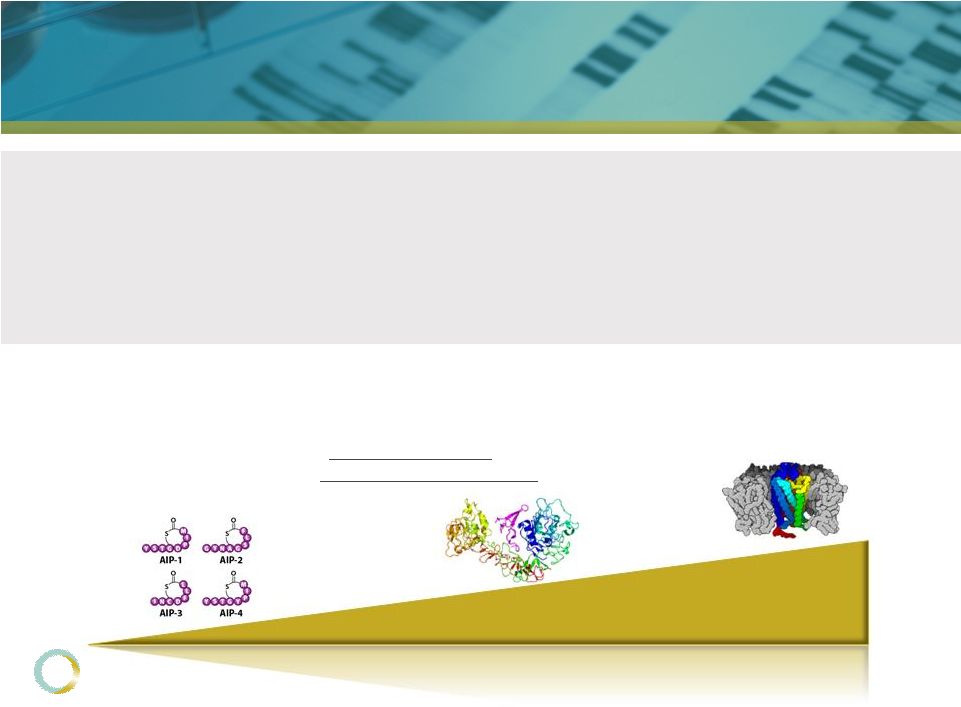 24
G-MAB: Library of Therapeutic Antibodies
High Value Oncology Targets:
Immune modulation:
PD-1, PD-L1, CD47
Antibody Drug Conjugates: VEGFR2, c-Met
Size of Target Antigen
Proprietary technology:
No stacking royalties
Very high library diversity:
2.1 x 10
16
distinct antibodies
Fully human antibodies
High successful screening hit rate
Difficult Targets:
Small Peptides
Most Difficult Targets:
G Protein-Coupled Receptors
(GPCRs)
RNA amplification used for
library generation
Freedom-To-Operate |
 25
Competitor mAb
Sorrento mAb
Anti-PD-L1 mAb Exhibits Potent Activity
Immune Modulation*
Tumor Mouse Model**
* mAbs @ 0.05 mg/mL
** xenograft model using H1975 human NSCLC cells; % inhibition relative to control
mAb treatment *** p<0.05, mean tumor volumes are significantly reduced
in STI-A1010 group versus control groups as determined by Mann-Whitney u-test
Day |
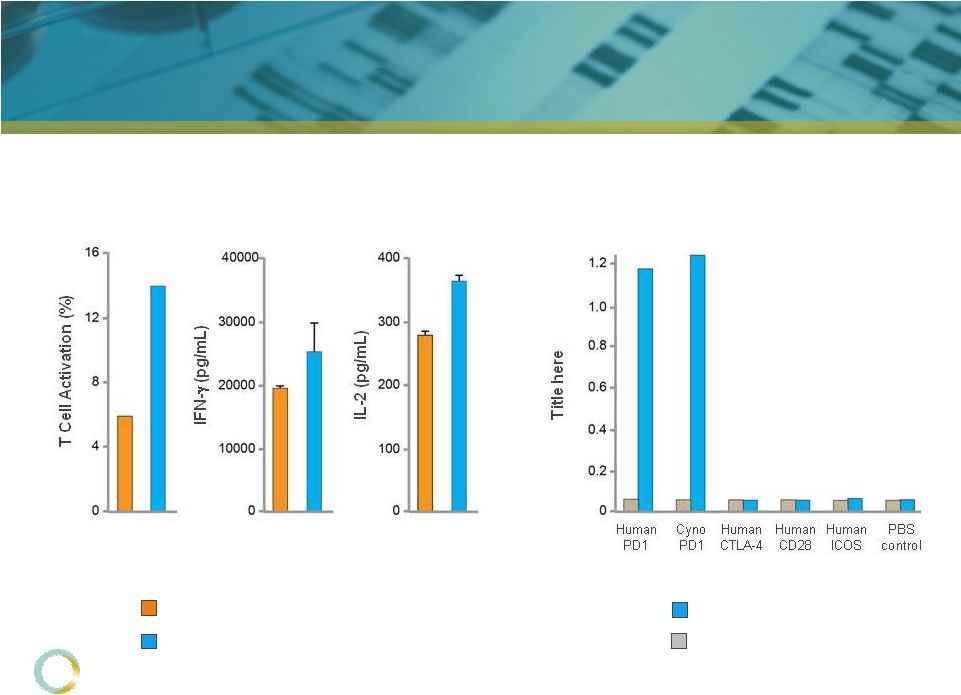 26
Competitor mAb
Sorrento mAb
Anti-PD1 mAb Exhibits Excellent Activity
Control
Sorrento mAb
Immune Modulation*
Target Specificity |
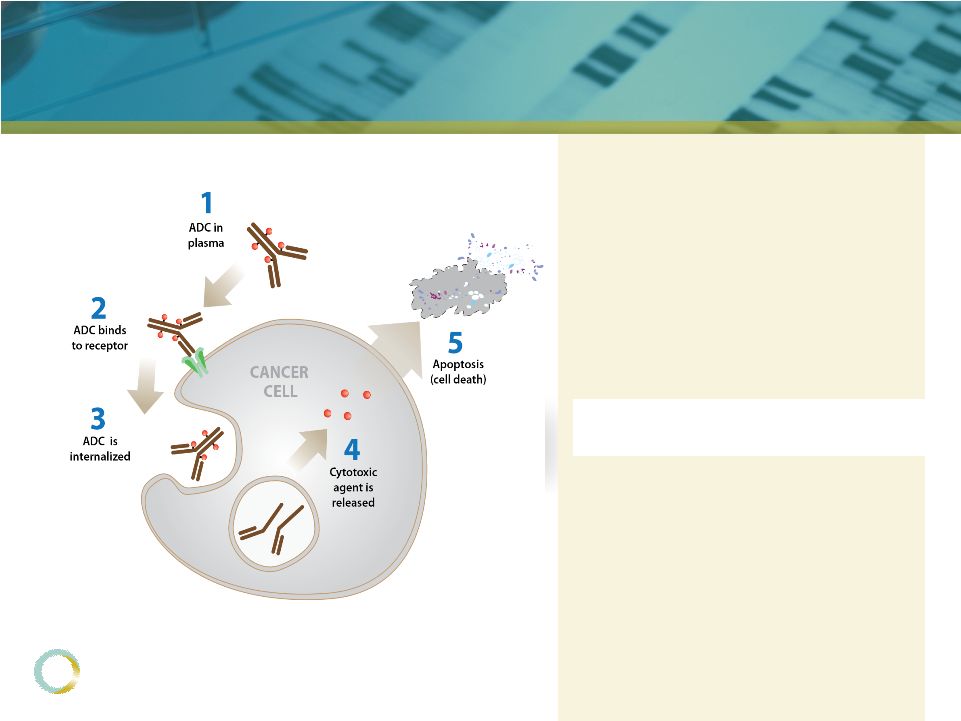 27
Antibody Drug Conjugates (ADCs)
Key Components:
Drug released in CANCER CELL
1.
Target-specific internalizing antibody
2.
Potent cytotoxic prodrugs
3.
Linker and conjugation chemistries |
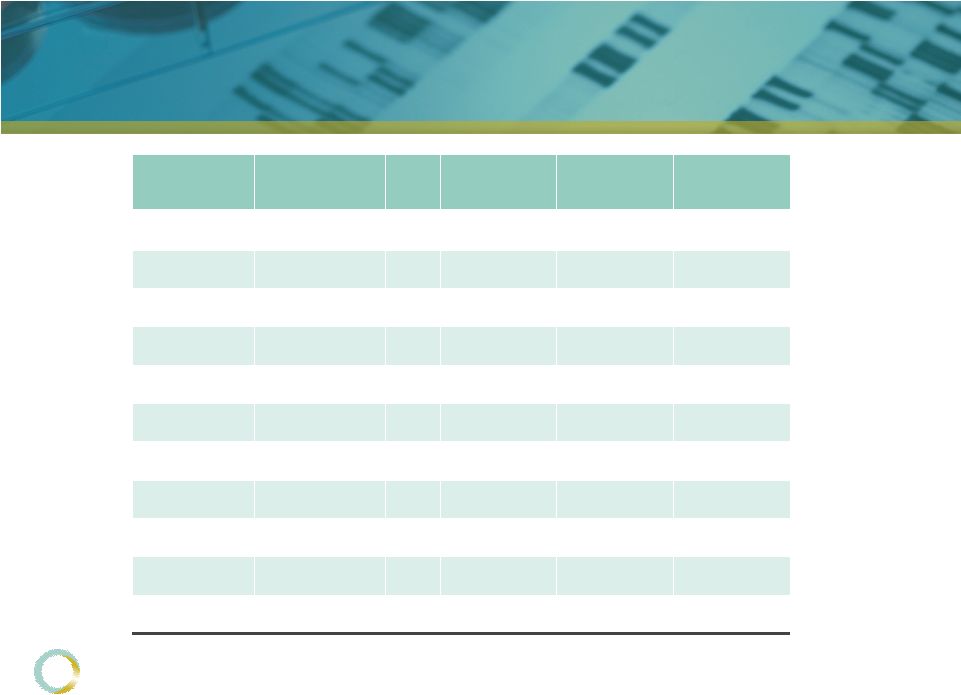 28
Proprietary High Potency Duostatin Toxins
EC
50
(pM)
Cancer
Her-2
DM1
MMAE
Duostatin 3
SBKR3
Breast
+++
95
72
30
HCC1954
Breast
+++
124
78
68
BT474
Breast
+++
818
126
214
MDA-MB-361
Breast
+++
218
151
35
ZR75
Breast
+++
215
298
264
HCC1419
Breast
+++
391
271
332
MDA-MB-453
Breast
++
1,877
>100,000
452
MDA-MB-175
Breast
+
>100,000
1,348
425
N87
Gastric
+++
368
139
260
OE-19
Gastric
+++
176
164
130
SKOV-3
Ovarian
+++
150
251
144
Trastuzumab was used as targeting mAb |
 29
Current industry
standard
Proprietary
K-Lock chemistry
Sorrento’s homogenous ADC
No need for:
K-Lock Conjugation Enables
Homogeneous ADCs
non-natural amino acids
genetic re-engineering
enzymatic posttranslational modification |
 30
S
S
S
S
S
S
S
S
S
S
S
S
N
O
O
Drug
N
O
O
Drug
N
O
O
Drug
N
O
O
Drug
S
S
S
S
S
S
S
S
Drug
Drug
Drug
Drug
Maleimide conjugation
Destabilizes antibody structure
Drug-antibody linkage not stable
Altered PK profile
Off-target drug effects
Antibody
C-Lock Conjugation Stabilizes ADCs
C-Lock conjugation
Enhances ADC stability
Prolongs PK profile
Reduces off-target effects |
 31
Proprietary ADC Screening Using Panels
Fast path to IND
Identification of optimal combination of linker, conjugation chemistry and
drug
payload
essential
for
efficient
and
expedited
development
from
hit
to
drug candidate |
 32
Efficacy of anti-VEGFR2-ADC STI-D0168
A431 squamous-cell carcinoma cells; ^indicates dosing
PBS
anti-VEGFR2 mAb (5 mg/kg)
STI-D0168 (1 mg/kg)
control ADC (5 mg/kg)
STI-D0168 (5 mg/kg) |
 33
PBS
control ADC (10 mg/kg)
anti-c-MET mAb (10 mg/kg)
D0602 (10 mg/kg)
D0602 (3 mg/kg)
U87 xenograft; dosing twice weekly; maytansinoid drug conjugates
Efficacy of anti-c-MET-ADC STI-D0602 |
 34
Intractable Cancer Pain Treatment
Ongoing Phase 1/2 study
Orphan drug status received
Three potential drug products from same API
Targeted Cancer Immunotherapeutics
First therapeutic antibody candidate in clinic 1H 2016
Proprietary linker/conjugation chemistry for homogenous
ADC generation
First ADC in clinic 1H 2016
Bi-specific antibodies in development
Late-Stage Cancer Drug
NDA submission in Q3 2015
Product launch expected in 2016
Addresses multi-billion dollar paclitaxel market
Abbreviated
regulatory
pathway
(“bioequivalence”)
for
approval
Investment Highlights
Cynviloq
RTX
G-MAB
& ADC |
 35
Developing Therapeutic Solutions to Help
Man’s Life Companions
A Subsidiary of Sorrento |
 Contact:
Henry Ji, Ph.D.
President and CEO
hji@sorrentotherapeutics.com
(858) 668-6923
Next-Generation
Cancer Therapeutics |
